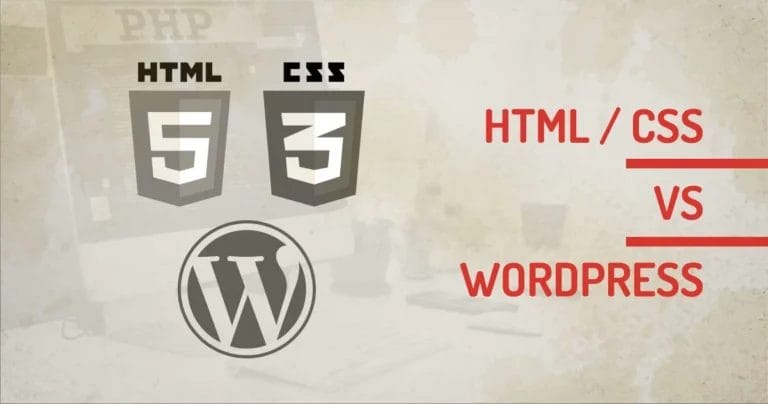The increase in podcast website popularity has sparked the need for a professional online presence. This guide navigates you through setting up a WordPress website, optimizing for podcasting, designing an engaging platform, publishing episodes, monetizing, and fostering audience connections.
The Popularity of Podcast Website
 Podcasts are experiencing popularity, becoming a preferred medium for both content creators and audiences. The engaging nature of audio content and convenience of consumption have led to a podcasting boom.
Podcasts are experiencing popularity, becoming a preferred medium for both content creators and audiences. The engaging nature of audio content and convenience of consumption have led to a podcasting boom.
- Explosive Growth: Podcast websites have experienced explosive growth, with an ever-increasing number of shows across various genres and niches.
- Accessibility: The accessibility of podcasts through smartphones and other portable devices has contributed significantly to their popularity.
- Diverse Content: A podcast website covers various topics, catering to virtually every interest and passion, from true crime and education to comedy and business.
- Commute-Friendly: A podcast website is a go-to choice for many during commutes, transforming mundane travel time into an opportunity for learning, entertainment, or staying updated.
- Convenience of Consumption: The on-demand nature of podcasts allows listeners to consume content conveniently, fitting into their busy schedules.
- Intimacy and Connection: The conversational and intimate nature of podcasting fosters a unique connection between hosts and listeners, creating a sense of community.
- Low Entry Barrier: The relatively low entry barrier for creating podcasts has led to a diverse pool of creators, ensuring various voices and perspectives.
- Monetization Opportunities: A podcast website offers various monetization opportunities, including sponsorships, ads, and listener contributions, attracting both hobbyists and professionals.
- Global Reach: Podcasts transcend geographical boundaries, enabling creators to reach a global audience and listeners to explore content worldwide.
- Adaptability to Multitasking: A podcast website seamlessly adapts to multitasking, allowing listeners to absorb content while engaging in other activities like exercising, cooking, or working.
Importance of Having a Podcast Website on WordPress
Amidst this podcasting renaissance, having a professional website is paramount. It serves as the central hub for your podcast, offering a platform to showcase episodes, engage with listeners, and establish a credible online presence.
- Content Ownership: Hosting your podcast on WordPress provides full control and ownership of your content, ensuring independence from third-party platforms.
- Customization Options: WordPress offers extensive customization options, allowing you to tailor the look and feel of your podcast website to align with your brand and engage your audience effectively.
- Integrated Website: Having a podcast website on WordPress means your audio content is integrated directly into your website, creating a centralized hub for your brand and content.
- Search Engine Visibility: WordPress is inherently SEO-friendly, increasing the visibility of your podcast episodes in search engine results and attracting a broader audience.
- Versatile Plugins: The availability of podcast-specific plugins on WordPress, such as Seriously Simple Podcasting or PowerPress, enhances functionality, making it easier to manage and showcase your episodes.
- User-Friendly Interface: WordPress provides an intuitive dashboard and user-friendly interface, making it accessible for both beginners and experienced podcasters to manage their content seamlessly.
- Consistent Branding: A WordPress podcast website allows for consistent branding, helping you establish a cohesive online presence and reinforcing your podcast's identity.
- Direct Audience Interaction: With features like comments and contact forms, WordPress enables direct interaction with your audience, fostering community engagement and feedback.
- Monetization Flexibility: WordPress provides flexibility in monetization strategies, allowing you to explore various revenue streams, such as ads, sponsorships, donations, or premium content.
- Full Website Potential: Beyond hosting a podcast website, WordPress opens opportunities for additional content, blogs, and features, enriching the overall user experience and creating a multifaceted online platform.
Our technical experts can help fix any issue you are having with WordPress, regardless of its complexity.
How to Start a Podcast Website with WordPress
 Embarking on a podcasting venture with WordPress involves strategic planning and execution. Begin by selecting a reliable hosting provider and installing WordPress. Choose a podcast-friendly theme, ensuring responsiveness and compatibility with media players. Integrate essential plugins for podcast management, SEO optimization, and social media sharing. Craft compelling, keyword-rich titles and descriptions for episodes, enhancing discoverability.
Embarking on a podcasting venture with WordPress involves strategic planning and execution. Begin by selecting a reliable hosting provider and installing WordPress. Choose a podcast-friendly theme, ensuring responsiveness and compatibility with media players. Integrate essential plugins for podcast management, SEO optimization, and social media sharing. Craft compelling, keyword-rich titles and descriptions for episodes, enhancing discoverability.
Create dedicated podcast pages, including a homepage with featured episodes, individual pages for each episode with detailed show notes, and an engaging "About" page. Implement user-friendly navigation and accessibility features, optimizing for a seamless user experience. Syndicate your podcast to major directories for wider reach, and regularly update and maintain your site for optimal performance.
Prioritize SEO strategies, including keyword research, transcriptions, and mobile optimization. Leverage social media for promotion, fostering audience engagement. Select a hosting service with sufficient bandwidth and scalability to accommodate your podcast's growth.
Starting a podcast website with WordPress offers a versatile and customizable platform for content creators. By combining the power of WordPress with effective podcasting strategies, you can build a professional online presence, reach a broader audience, and establish a successful podcasting journey.
Setting up a WordPress Podcast Website
Choosing a Hosting Service
 Selecting the right hosting service for your podcast website is crucial. Choose a provider with robust server performance, ample bandwidth, and storage for podcast files. Prioritize scalability, ensuring the hosting plan can accommodate your podcast's growth. Look for podcast-friendly features, including RSS feed support and integration with directories. Opt for reliable providers with high uptime, multimedia support, and security measures.
Selecting the right hosting service for your podcast website is crucial. Choose a provider with robust server performance, ample bandwidth, and storage for podcast files. Prioritize scalability, ensuring the hosting plan can accommodate your podcast's growth. Look for podcast-friendly features, including RSS feed support and integration with directories. Opt for reliable providers with high uptime, multimedia support, and security measures.
A Content Delivery Network (CDN) enhances global accessibility, while user-friendly control panels and responsive customer support simplify management. Consider the budget, read reviews, and seek recommendations to make an informed decision, ensuring a seamless and reliable podcast hosting service experience. Consider WordPress hosting.
Installing WordPress
To install a WordPress for your podcast website, choose a domain and reliable hosting provider like Bluehost. Utilize the hosting provider's one-click WordPress installation, often found in the control panel. After installation, configure general settings in the WordPress dashboard.
Select a podcast-friendly theme under "Appearance" > "Themes." Customize the theme to align with your podcast's branding. Enhance functionality with essential plugins for podcasting, SEO, and social media integration. Your WordPress site is now ready for content creation, making it an optimal platform for hosting and managing your podcast episodes.
Selecting a Podcast-Friendly WordPress WordPress Theme
When choosing a podcast-friendly WordPress theme for your WordPress site, prioritize clean designs, responsive layouts, and compatibility with podcast plugins. Look for themes with built-in support for media players and customizable options to showcase episode details prominently. Ensure the theme aligns with your brand and allows easy navigation.
Themes like "Audio player" or "Soundbyte" cater specifically to podcasting needs, offering visually appealing displays for episodes and show notes. Regular updates and positive user reviews indicate a theme's reliability. Ultimately, selecting a podcast-friendly theme enhances your website's visual appeal and functionality, optimizing your audience's overall podcasting experience.
Optimizing the Website for Podcasting
Integrating Podcast Hosting Platforms
Integrating podcast hosting platforms with your WordPress site is crucial for seamless content delivery. Choose a reliable hosting service based on features, pricing, and compatibility with your podcasting goals. Set up your podcast website on the chosen platform, generate an RSS feed, and embed episodes effortlessly into your WordPress site using plugins or platform-provided options. Syndicate your podcast to major directories for wider reach.
Regularly manage and troubleshoot integration issues, ensure security compliance, and plan for scalability as your podcast grows. Real-life examples and case studies provide insights, helping optimize your podcast hosting experience for sustained success. Integrate dedicated podcast hosting platforms like Libsyn, Podbean, or Blubrry. These platforms efficiently manage and deliver podcast files, ensuring a seamless listening experience for your audience.
Creating Podcast-Specific Pages
 Develop dedicated pages for your WordPress podcast website. Crafting dedicated podcast pages on your WordPress site is pivotal for a captivating online presence. Design an engaging podcast homepage featuring standout episodes and a compelling show description, urging visitors to subscribe. Individual episode pages with detailed show notes, embedded players, and download links enhance accessibility. Implementing a thoughtful categorization system and thematic playlists organizes content seamlessly, aiding navigation.
Develop dedicated pages for your WordPress podcast website. Crafting dedicated podcast pages on your WordPress site is pivotal for a captivating online presence. Design an engaging podcast homepage featuring standout episodes and a compelling show description, urging visitors to subscribe. Individual episode pages with detailed show notes, embedded players, and download links enhance accessibility. Implementing a thoughtful categorization system and thematic playlists organizes content seamlessly, aiding navigation.
The "About" page, complete with host details, adds a personal touch. These podcast-specific pages not only elevate user experience but also contribute to the discoverability and overall success of your podcast within the digital landscape. Include sections such as 'Episodes,' 'About,' and 'Contact,' providing a comprehensive overview of your podcast and easy navigation for visitors.
Adding Essential Podcast Plugins
Enhance your podcasting capabilities with an essential WordPress plugin. Enhance your WordPress podcast website by integrating essential plugins. Choose a podcast hosting plugin for seamless episode management, distribution, and embedding. Implement SEO plugins to boost discoverability and improve search rankings. Social media integration plugins amplify your podcast's reach by automatically sharing episodes on various platforms. Ensure a dynamic user experience with player customization plugins that enhance the visual appeal and functionality of your embedded audio players.
These essential podcasting plugins collectively streamline operations, optimize content visibility, and elevate engagement, fostering a successful and user-friendly podcasting platform on WordPress. Consider tools like Seriously Simple Podcasting, Smart Podcast Player, or Blubrry PowerPress for seamless podcast integration and improved user experience.
Designing an Attractive and User-Friendly Podcast Website
Customizing the Podcast Website Appearance
Personalize your website's appearance to align with your podcast's brand. Customizing the appearance of your podcast website on WordPress is crucial for creating a visually appealing and brand-aligned platform. Begin by selecting a podcast-friendly theme that complements your content and enhances user experience. Customize the color scheme, typography, and layout to reflect your brand identity. Customize colors, fonts, and layouts through the WordPress dashboard, ensuring a visually cohesive and appealing design.
Implementing a responsive design ensures optimal viewing across various devices. Tailor the homepage with featured episodes, compelling graphics, and clear navigation. Utilize customizable widgets and plugins for additional functionality. Regularly update and refine the design to maintain a fresh and engaging aesthetic. A visually cohesive and user-friendly podcast website enhances audience engagement and reinforces your podcast's brand image.
Enhancing User Experience with Navigation and Accessibility
Prioritize user experience by implementing intuitive navigation. Ensure accessibility by using alt text for images and maintaining a clean, organized layout that accommodates users with various needs. Improving user experience (UX) on your podcast website involves strategic navigation and accessibility considerations. Design an intuitive menu structure, featuring clear categories and sections for easy exploration of episodes and content. Implement a search function for quick access to specific topics.
Prioritize accessibility by ensuring compatibility with screen readers, using alt text for images, and employing readable fonts and color contrasts. Maintain a consistent layout for familiarity and ease of use. Regularly test navigation on various devices to guarantee responsiveness. By prioritizing seamless navigation and accessibility features, your podcast website becomes inclusive, user-friendly, and more engaging for a diverse audience.
Incorporating Social Media and Contact Information
 Integrate social media buttons to facilitate easy sharing of episodes. Provide clear contact information, allowing listeners to connect with you directly. Boost the reach and interaction of your podcast website by seamlessly incorporating social media and contact information. Integrate social media icons prominently, linking to your podcast's profiles on platforms like Twitter, Instagram, and Facebook. Enable social sharing buttons on individual episode pages to encourage listeners to share content.
Integrate social media buttons to facilitate easy sharing of episodes. Provide clear contact information, allowing listeners to connect with you directly. Boost the reach and interaction of your podcast website by seamlessly incorporating social media and contact information. Integrate social media icons prominently, linking to your podcast's profiles on platforms like Twitter, Instagram, and Facebook. Enable social sharing buttons on individual episode pages to encourage listeners to share content.
Include a dedicated "Contact" page with a user-friendly form and essential details like email or a business contact number. Foster audience engagement by responding promptly to inquiries and encouraging social media interactions. This integration not only expands your online presence but also enhances accessibility and connectivity, building a loyal and interactive community around your podcast. Utilize plugins like Smash Balloon Social Photo Feed for seamless social media integration.
Publishing and Promoting Podcast Episodes
Uploading Episodes to the Podcast Website
 Publish your episodes directly to your podcast website. Ensure the files are in the correct format, and use WordPress plugins like Blubrry PowerPress for hassle-free embedding and sharing.
Publish your episodes directly to your podcast website. Ensure the files are in the correct format, and use WordPress plugins like Blubrry PowerPress for hassle-free embedding and sharing.
- Prepare Episode Files: Ensure your podcast episodes are properly edited and saved in a compatible format, commonly MP3. Include relevant metadata like episode title, description, and cover art.
- Access Your WordPress Dashboard: Log in to your WordPress admin dashboard.
- Navigate to Media Library: Upload your podcast episode files to the Media Library. Click on "Media" in the dashboard and then "Add New."
- Create a New Post or Page: Go to "Posts" or "Pages" and create a new one for your episode. Add the episode title, description, and any additional information.
- Embed the Audio File: Insert the episode by either using the "Add Media" button and selecting the file or using a podcasting plugin that facilitates audio embedding.
- Include Show Notes: Beneath the audio player, provide detailed show notes containing relevant information, links, and timestamps.
- Set Featured Image: Assign a visually appealing featured image to represent the episode on your website.
- Configure Categories and Tags: Categorize and tag the episode for easy organization and searchability.
- Preview and Publish: Preview the episode page to ensure everything appears as intended. Once satisfied, hit "Publish" to make the episode live.
- Share and Syndicate: After publishing, share the episode on social media and ensure it's syndicated to podcast directories for broader visibility.
Utilizing SEO Strategies for Podcasting
Optimize your podcast episodes for search engines by including relevant keywords in episode titles, descriptions, and show notes. This enhances discoverability and attracts a broader audience.
- Keyword Research: Identify relevant keywords and phrases related to your podcast content. Use tools like Google Keyword Planner or other SEO tools to find terms with high search volume.
- Optimized Titles and Descriptions: Craft compelling, keyword-rich titles and descriptions for your podcast episodes. Communicate the episode's content and value to potential listeners.
- Transcriptions: Provide transcriptions for your episodes. This not only enhances accessibility but also creates more text content for search engines to index.
- SEO-Friendly URLs: Use clean, descriptive URLs for your podcast episodes and pages. Include relevant keywords to make them more search engine friendly.
- Image Alt Text: Add descriptive alt text to your podcast images. This helps search engines understand the content of the images and contributes to overall SEO.
- Submit Podcast to Directories: Submit your podcast to major directories like Apple Podcasts, Spotify, and Google Podcasts. This increases your podcast's visibility in search results.
- Internal Linking: Interlink your podcast episodes within your website content. This improves navigation and helps search engines understand the relationships between different pages.
- Social Media Promotion: Actively promote your podcast on social media platforms. Social signals can contribute to your overall online presence and impact SEO.
- Regular Content Updates: Keep your podcast website updated with fresh, relevant content. Search engines favor websites that consistently provide valuable information.
- Mobile Optimization: Ensure your website is mobile-friendly. With the increasing use of mobile devices, mobile optimization is a crucial factor in search engine rankings.
- Page Loading Speed: Optimize your website's loading speed. Search engines consider page speed a ranking factor, and faster-loading pages provide a better user experience.
- Google Analytics: Implement Google Analytics to monitor website traffic, user behavior, and other key metrics. Use this data to refine your SEO strategy.
How to Record Your First Podcast
Recording your podcast can be an exciting and straightforward process with the right approach. Follow these steps to ensure a successful recording:
- Planning: Outline your podcast episode by creating a script or bullet points. Clearly define the purpose, structure, and key topics you want to cover.
- Equipment Setup: Invest in a decent microphone, headphones, and audio recording software. Choose a quiet space to minimize background noise. Test your equipment to ensure optimal sound quality.
- Recording Software: Use reliable recording software such as Audacity, GarageBand, or professional tools like Adobe Audition. Familiarize yourself with the software's features before recording.
- Mic Technique: Position your microphone properly and maintain a consistent distance while speaking. Avoid popping sounds by using a pop filter.
- Test Recording: Record a short test segment to check audio levels and quality. Listen for any background noise or technical issues that need addressing.
- Voice and Delivery: Speak clearly and at a moderate pace. Inject enthusiasm into your voice to engage listeners. Be yourself and let your personality shine through.
- Editing: Edit your recording to remove any mistakes, long pauses, or irrelevant content. Enhance the overall flow and coherence of the episode.
- Intro and Outro: Create or record an intro and outro for your podcast. Include essential information such as the podcast name, episode number, and a call-to-action for listeners.
- Saving and Exporting: Save your final recording in a high-quality format (e.g., MP3). Export the file for easy sharing and uploading to podcast hosting platforms.
- Uploading and Publishing: Choose a podcast hosting platform (e.g., Libsyn, Podbean) to upload and publish your episodes. Follow the platform's guidelines for a seamless publishing process. You can also submit your podcast to iTunes.
- Promotion: Share your episode on social media, your podcast website, and any relevant communities. Encourage listeners to subscribe, leave reviews, and provide feedback.
Remember, your first podcast episode might not be perfect, and that's okay. With practice, you'll refine your skills and create engaging content for your audience. Enjoy the process and have fun sharing your passion with the world!
Engaging with the Audience
Encouraging Feedback and Reviews
Foster a sense of community by encouraging listener feedback and reviews. Use plugins like WP Review to display and manage reviews, creating a space for audience interaction and testimonials.
Creating Interactive Features
Enhance audience engagement with interactive features. Consider adding polls, surveys, or comment sections to gather feedback and insights from your listeners, creating a more dynamic and participatory experience.
Building a Community Through Forums and Discussion Boards
Establish a dedicated community space by integrating forums or discussion boards. Plugins like bbPress or BuddyPress enable you to create a forum directly on your WordPress website, fostering ongoing conversations among your podcast audience.
Final Take
Embarking on the journey of creating a podcast website with WordPress opens up a world of possibilities. From the initial setup to optimizing for podcasting, designing an attractive platform, and engaging with your audience, each step contributes to a compelling online presence. As you explore the diverse plugins and customization options WordPress offers, remember that your podcast website is not just a platform but a dynamic space to connect, share, and grow with your audience. Start your podcasting adventure with WordPress and watch your online presence flourish




